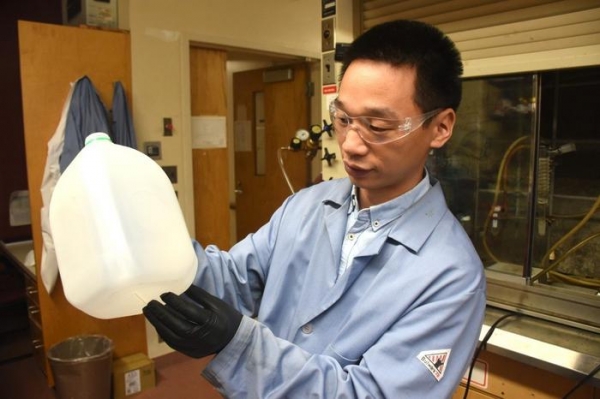A team led by Virginia Tech researchers has developed a new method for upcycling plastics into high-value chemicals known as surfactants, which are used to create soap, detergent, and more.
A team led by Virginia Tech researchers has developed a new method for upcycling plastics into high-value chemicals known as surfactants, which are used to create soap, detergent, and more.
Plastics and soaps tend to have little in common when it comes to texture, appearance, and, most importantly, how they are used. But there is a surprising connection between the two on a molecular level: The chemical structure of polyethylene — one of the most commonly used plastics in the world today — is strikingly similar to that of a fatty acid, which is used as a chemical precursor to soap. Both materials are made of long carbon chains, but fatty acids have an extra group of atoms at the end of the chain.
Guoliang “Greg” Liu, associate professor of chemistry in the Virginia Tech College of Science, had long felt this similarity implied that it should be possible to convert polyethylene into fatty acids — and with a few additional steps to the process — to produce soap. The challenge was how to break a long polyethylene chain into many short — but not too short — chains and how to do it efficiently. Liu believed there was the potential for a new upcycling method that could take low-value plastic waste and turn it into a high-value, useful commodity.
Read more at: Virginia Tech
Guoliang “Greg” Liu holds a common water jug in his lab at Hahn Hall South. (Photo Credit: Steven Mackay for Virginia Tech)






